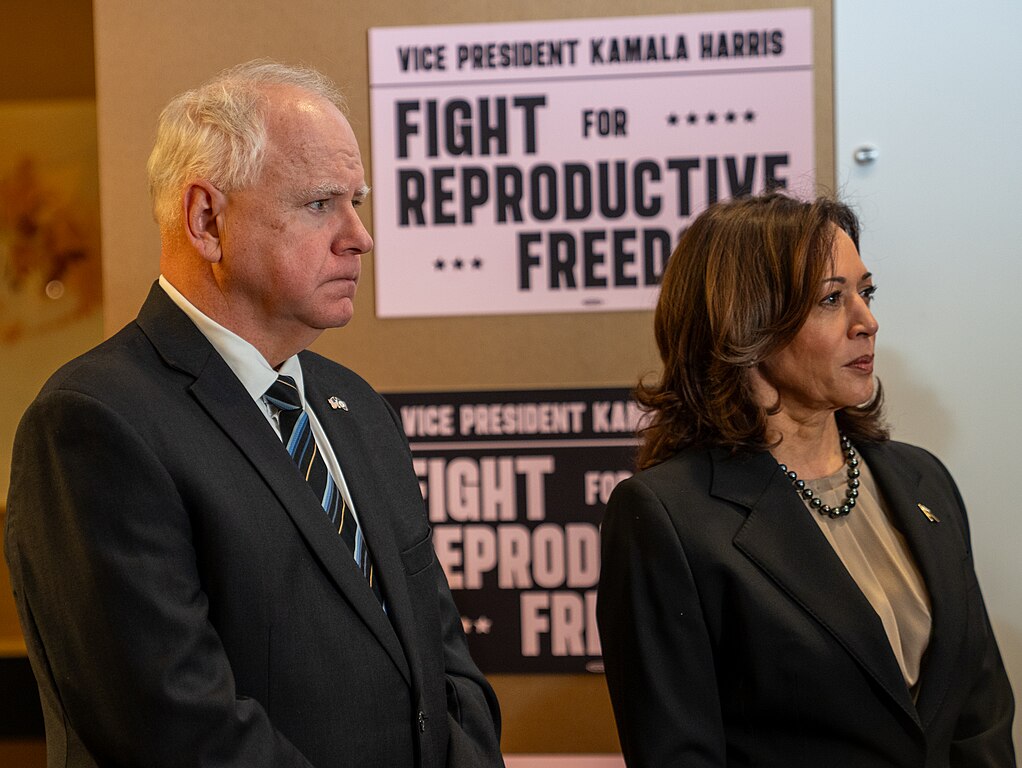Minnesota Governor Tim Walz is facing public backlash after state funds were directed to a nonprofit that reportedly distributes “booty bumping” kits to drug users. The controversy erupted following revelations that the organization, backed by taxpayer dollars, includes kits designed for the administration of drugs rectally, a method commonly known as “booty bumping.” The nonprofit, which aims to reduce harm among drug users, is now at the center of heated debate, with critics questioning the ethical and fiscal implications of public money funding these initiatives.
The kits, which reportedly come with instructions advising users to “try to poop before” using the method to enhance drug absorption, have drawn sharp criticism from conservative groups and concerned citizens alike. Many have taken to social media to express outrage, deeming the program an inappropriate use of taxpayer money. The details of the kit’s contents and instructions, which aim to minimize harm for drug users, have only fueled the controversy.
State officials have defended the program, arguing that the harm reduction approach is a necessary measure to mitigate health risks for drug users. Advocates for harm reduction stress that such methods can reduce the transmission of diseases like HIV and hepatitis among drug-using populations. “We’re focused on public health and safety,” a spokesperson for the nonprofit told local media. “This funding supports programs that prioritize reducing harm, not encouraging drug use.”
Critics, however, see it differently. Republican lawmakers and watchdog groups have called for an audit of the funding and demand greater oversight of state-supported health initiatives. “This is not about harm reduction—it’s an outrageous use of public funds,” a local politician stated. “Programs that help drug users are important, but distributing drug paraphernalia with taxpayer dollars crosses a line.”
The controversy intensified after a photo of the “booty bumping” kits circulated on social media, igniting a firestorm of comments. Some commenters referred to the program as “very weird,” with others calling for Walz to redirect funding to more conventional drug rehabilitation and support services. “There are better ways to help those struggling with addiction,” said one Twitter user, whose post was shared widely among concerned Minnesota residents.
Governor Walz has yet to respond directly to the criticism, though sources within his administration have indicated that the funding allocation is part of a larger harm reduction effort aimed at addressing the state’s ongoing substance abuse crisis. For now, Walz’s office is maintaining its stance, emphasizing the importance of innovative approaches to combat the spread of infectious diseases within the drug-using community.
As public opinion remains divided, calls for transparency and accountability are mounting. The debate has highlighted an ongoing struggle over how best to address drug addiction, with harm reduction proponents advocating for progressive strategies and opponents urging a more conservative approach to public health funding.
As the debate over Minnesota’s harm reduction policies intensifies, Walz’s administration faces pressure to clarify its position on the controversial program and reassure taxpayers about the goals and effectiveness of such initiatives. Whether the governor’s stance will shift remains uncertain, but the controversy has cast a spotlight on the complexities of addiction support in Minnesota.



 Democrats Sue Trump Over Executive Order on Voting System
Democrats Sue Trump Over Executive Order on Voting System  Trump Targets Trade Barriers with Reciprocal Tariffs Amid USTR Report
Trump Targets Trade Barriers with Reciprocal Tariffs Amid USTR Report  Trump Launches U.S. Investment Accelerator to Overhaul CHIPS Act Program
Trump Launches U.S. Investment Accelerator to Overhaul CHIPS Act Program  U.S. and Russia Begin Rare Earth Metals Cooperation Talks Amid Global Competition
U.S. and Russia Begin Rare Earth Metals Cooperation Talks Amid Global Competition  Taiwan Prepares for U.S. Tariffs as Lai Urges Swift Contingency Measures
Taiwan Prepares for U.S. Tariffs as Lai Urges Swift Contingency Measures  Marine Le Pen Faces Verdict That Could Bar Her from 2027 Presidential Race
Marine Le Pen Faces Verdict That Could Bar Her from 2027 Presidential Race  UK, France, and Ukraine Strengthen Security Talks Amid Rising Tensions with Russia
UK, France, and Ukraine Strengthen Security Talks Amid Rising Tensions with Russia  Netanyahu Pushes Disarmament of Hamas Amid Escalating Gaza Conflict
Netanyahu Pushes Disarmament of Hamas Amid Escalating Gaza Conflict  Elon Musk Donates $1M to Boost Conservative Candidate in Key Wisconsin Court Race
Elon Musk Donates $1M to Boost Conservative Candidate in Key Wisconsin Court Race  Duterte’s ICC Arrest Sparks Online Attacks, Misinformation Surge
Duterte’s ICC Arrest Sparks Online Attacks, Misinformation Surge  Japan Urges U.S. to Exempt Auto Tariffs Amid Economic Concerns
Japan Urges U.S. to Exempt Auto Tariffs Amid Economic Concerns  French Court Bars Marine Le Pen from 2027 Presidential Run over Embezzlement Conviction
French Court Bars Marine Le Pen from 2027 Presidential Run over Embezzlement Conviction  TikTok Nears U.S. Deal Ahead of April 5 Ban Deadline, Trump Confirms
TikTok Nears U.S. Deal Ahead of April 5 Ban Deadline, Trump Confirms  Trump to Announce New Trade Tariffs on April 2, Aims to Level Global Playing Field
Trump to Announce New Trade Tariffs on April 2, Aims to Level Global Playing Field  Trump Administration Reviews $9 Billion in Harvard Funding Amid Antisemitism Crackdown
Trump Administration Reviews $9 Billion in Harvard Funding Amid Antisemitism Crackdown  Trump to Impose Broad Reciprocal Tariffs on All Trade Partners
Trump to Impose Broad Reciprocal Tariffs on All Trade Partners  Trump Warns Iran of Bombing and Tariffs Over Nuclear Standoff
Trump Warns Iran of Bombing and Tariffs Over Nuclear Standoff 





























